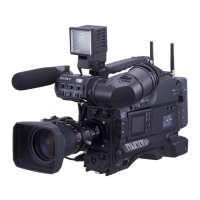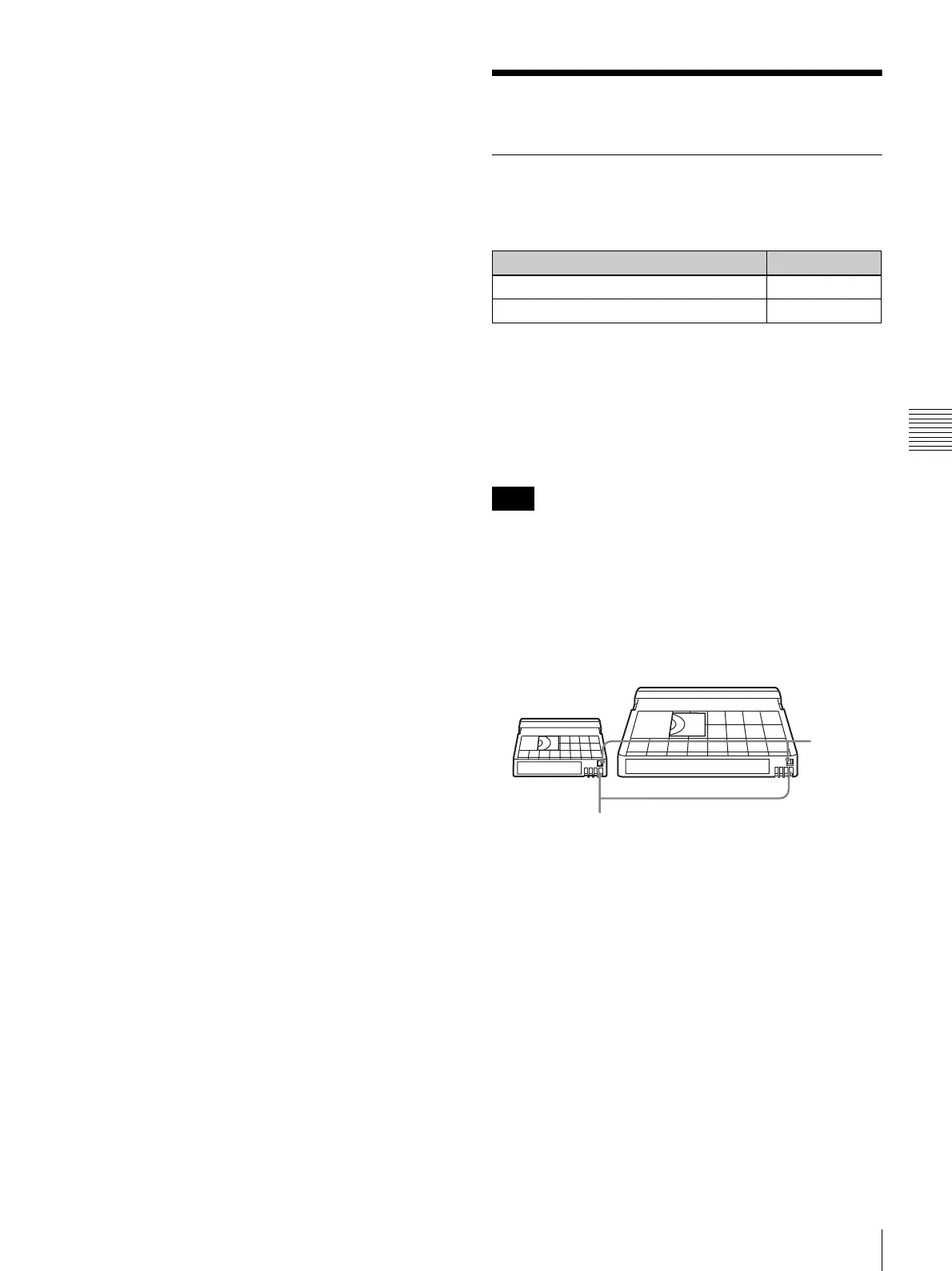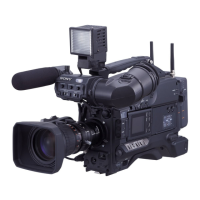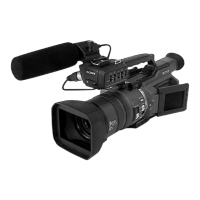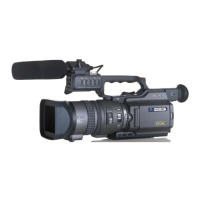47
Recording
Chapter 4 Recording and Playback
8
If required, switch on the center marker and/or safety
zone in the viewfinder image.
For details, see “Setting the marker display” on page
100.
Also, press the ZEBRA button to display zebra pattern
in the viewfinder.
9
If necessary, adjust the white balance and black
balance
(page 50).
10
If necessary, adjust the iris and gain.
For details about the adjustment of iris, see “Iris ring”
on page 19, “Instant automatic iris adjustment
button” on page 19, and “Adjusting the iris” on page
55.
For details about the adjustment of gain, see “GAIN
switch” on page 11, and “Setting gain values for the
GAIN switch positions” on page 103.
11
Turn the focusing ring so that the subject is sharply in
focus.
12
Setup the VTR section according to your shooting
objects, then start recording by pressing the REC
button.
• During recording, the REC/TALLY indicator(s) in
the viewfinder light(s), and “REC” appears on the
viewfinder screen.
• You can use the AUDIO LEVEL knob on the front
of the camcorder to manually adjust the channel 1
audio level. To do this, you must first set up the VTR
section to enable manual adjustment of the audio
recording level
(page 57).
13
To pause recording, press the REC button again.
Recording
Usable cassettes
It is recommended to use the DVCAM cassettes listed
below for this camcorder.
The “*” in each model name is actually “ME” (indicating
that a cassette memory is contained), or “N” (indicating
that no cassette memory is contained).
The numbers in the model names show maximum
recording/playback time (minutes) for each model. For
example, the maximum recording/playback time of the
PDV-184* is 184 minutes.
If you insert an incorrect type of cassette, it will be
automatically ejected.
DVCAM cassettes
The following figure illustrates the DVCAM cassettes’
appearance.
Notes on using cassettes
• Before storing the cassette, rewind the tape to the
beginning and be sure to put the cassette in its storage
case, preferably on end instead of flat on its side. The
storage case of a DVCAM cassette is specially designed
to ensure a long-period storage of the tape. Storing a
cassette in any other condition (not rewound, out of its
case, etc.) may cause the video and audio contents to
become damaged over time.
• If the cassette memory connector (contact point)
becomes dirty, connection problems may occur and
cause a loss of functions. Remove away any dust or dirt
from this area before using the cassette.
• If the cassette is dropped on the floor or otherwise
receives a hard impact, the tape may become slackened
Model name Size
PDV-184*/124*/94*/64*/34* Standard size
PDVM-40*/32*/22*/12* Mini size
Note
Standard size
Mini size
REC/SAVE
switch
Cassette memory
